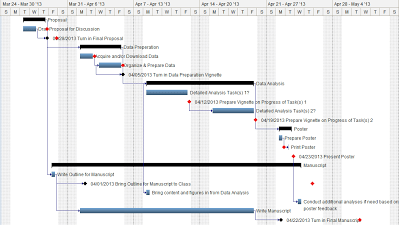gis
You obviously have not been exposed to the full breadth of potential GIS spatial analyses tools yet. However, you can browse through ArcGIS help, look at the topics we covered in WATS 4930/6920, and do some literature review to identify techniques that you may want to use. Don’t worry if your plans change. We won’t hold you to exactly what you layout in your proposal. The important thing is to develop a plan, and start pursuing it. Mid course corrections are expected…in fact I will be surprised if you stick exactly to your original proposal.
Proposal Deadlines:
- Bring a draft of your proposal to class on Thursday (week 1)!
- Turn in your full proposal on Friday. Submit your proposal as a PDF to Canvas
- Your proposals will reviewed and returned to you with feedback to help you move forward.
Your project proposal should (in no more than 2-4 pages) outline what you are doing, why and how. Your proposal should have a title for your project and needs to include the following sections:
Please use this
ResearchProposalTemplate.docx
as a template (feel free to reformat as you see fit).
Instructions for completing the proposal (by section) are in the template (and the same text is provided below):
Question/Problem
Idea/Hypothesis
Very concisely articulate your idea for how to address the question or problem you posed above. If your question is applied or methodological it may not be necessary to pose a formal hypothesis. However, if your problem is more theoretical or might have broader scientific applicability, it might be helpful to pose a hypothesis you will test.
Novelty/Scientific Originality
In order to be publishable, work generally needs to be scientifically original. In one to two sentences, explain how your proposed research is novel and/or original. You may be producing a new spatial analysis method or model, or you may simply be applying an existing method in a new place or to a new problem. You will not need to meet the same standards of novelty that the actual journal editors would hold you to for this class. However, you do need to make some claim as to the novelty.
Methods
Data Acquisition, Organization & Preparation
You will probably not have enough time in five short weeks to go design and undertake your own data acquisition campaign. As such you will likely have to leverage existing data sources (either your own, from someone else, or publicly available). Describe what data you will need to undertake your project, where you will acquire it from, what preparation of it you will need to undertake (e.g. making rasters orthogonal or merging tiles together for just your study area), and you will organize your data to prepare for your analysis.
Spatial Analysis Methods
A requisite of the project is that you use some advanced spatial analysis methods to address the problem or question you pose. Provide enough detail on the specific spatial methods and techniques you will use so that I can give you feedback regarding appropriateness and feasibility with respect to the problem you posed and how much time you have. Please identify specific GIS workflows, geoprocessing tasks, etc. you will undertake to complete your analyses. Making a map IS NOT a spatial analyses and not enough to meet the requirements of this class. However, undertaking analyses similar to any of those we did in Labs 6-9 is sufficient. You are also encouraged to consider writing your own or modifying existing geoprocessing models, Python scripts, R scripts, etc. to undertake your analyses. Please provide appropriate citations to any supporting methods you intend to use.
Other Methods
To actually complete most projects, some other non-spatial analysis methods are often required. These can include basic statistical analyses, other types of modeling (e.g. regression modeling), analytical calculations, etc. Please provide a brief description and appropriate citations of all other methods you anticipate using to address your problem.
Purpose of Your Project
You will be graded relative to how well you address the purpose you pose in your manuscript. The key is to set a realistic goal/purpose (even if post-hoc) that can be reasonably accomplished in five weeks. In no more than 2-3 sentences, articulate the purpose of your project. This may be as simple as addressing the question or problem you posed above using the methods you describe above. Whatever it is, you need to be able to articulate it clearly.
Plan of Attack
Please provide a detailed bulleted schedule (taking into account your other course deadlines and life) of what you plan to do, how long you think it will take and when you need to get it done by.
Optional
If you want to create a Gantt chart to help you plan your project, you can use the following as a template:
To use, go to https://app.gantter.com/ and from the Project pull down menu, choose Import local Gantter file and load the above template. You can then edit and modify it and save it to your account. A Gantt chart is simply a timeline of project tasks that shows dependencies and is often used for project planning:
Target Journal
List the full name of the target journal.
In 1 – 2 Sentences, explain how your project fits the aims and scopes of the journal. Note that your choice of a target journal will define your audience.
Provide a URL to the aims and scope of the journal.
References
Provide appropriate references to any cited literature here. Use ENDNOTE if possible (see http://etal.joewheaton.org/resources/how-to-guides/use-specific-software/endnote/endnote-x4-basics and http://etal.joewheaton.org/resources/how-to-guides/writing-resources/writing-literature-reviews-for-grads if you need help).
